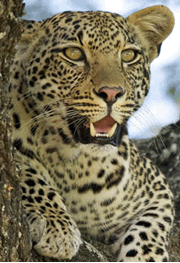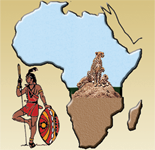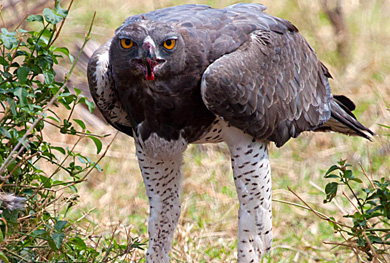Kenya Bird Watching Safari June 17-30 2025-2026
fromDuration: 14 Days Bird Watching Safaris
Morning and Evening Game Drives
Expected 405 – 588 Bird Species (2 weeks)
Areas to cover Lake Naivasha, Nairobi National Park, Lake Nakuru and Baringo, Kakamega Forest Lake Victoria, Mt Kenya National Park and Samburu
-
Reviews 0 Reviews0/5
-
Vacation Style Holiday Type
-
Activity Level
-
Kenya June 2022 – 2025/ 2026– 14 Days Birding Wilderness
 Expectations 405 – 588 Species seen (2 weeks)
Expectations 405 – 588 Species seen (2 weeks)
LEADER: Joseph
Ground Price $4,350 Deposit per person $1,300
Single supplement $900
GROUP SIZE: Minimum number for tour to go ahead: 4; 12 participants Maximum with 2 tour leaders
Latest Time to confirm participation is 15th May 2025-2026
14 Days/ 13 Nights – Nairobi National Park – Lake Naivasha – L. Baringo –Kakamega Forest –Kisumu – L. Nakuru – Mt. Kenya – Samburu – Mt. Kenya ––- Fly
15th & 16th June: Arrival Nairobi
Today on arrival at the Jomo Kenyatta International Airport (KQ Evening Flight 2020hrs) (J.K.I.A) Airport, you will be met and greeted by our customer service representative and later we transfer you to you Nairobi Hotel for relaxation where you will Spend your evening overnight at a Hotel in Nairobi (Own arrangements)
Day 01: 17th June
This morning, after breakfast we will pick you from Nairobi Hotel at 0730hrs and drive across to Nairobi National Park, which lies within the shadows of the large capital city in the world and despite being only a few kilometers from the city is a home to big game. With highland forest, Acacia woodland, rocky escarpments, open grassland, large ponds, and small streams, this park is home to a wide variety of birds and mammals. Some of the key species we will search for here are Shelley’s Francolin, Hartlaub’s Bustard, Singing Cisticola, Banded and Brown Warblers, African Yellow Warbler, Northern Pied Babbler, White-breasted White-eye, Long-tailed Fiscal, and White-winged Widowbird. Nairobi National Park is without a doubt the best place in Kenya to see the endangered Black Rhino, and we have a very good chance of locating this very impressive species together with many of the other mammals we have seen before. Lunch will be organized at The Rangers Restaurant outside the Main Gate and Later in the afternoon we will drive you back to the hotel. Overnight at a Hotel (HB).
Day 02: 18th June
The morning we will leave early so that we get time to bird at Lake Naivasha (with an Optional boat trip on Lake Naivasha). Specialty birds we will be looking for while out on the lake include Pink-backed Pelican, Goliath and Purple Herons, Southern Pochard, African Marsh-harrier, Purple Swamphen, Lesser Moorhen, Three-banded Plover and Lesser Swamp-warbler. Mid-morning we will depart for Nairobi, making several birding stops en route. Our first destination birding stop is at the Limuru Pond located just off the main highway. A large ridge overlooks the pond and from this vantage point we should be able to locate Madagascar Pond-heron, Intermediate Egret, White-backed and Maccoa Ducks, White-faced and Fulvous Whistling-ducks, Black Crake and Whiskered Tern. Next will be the Gatamaiyu Forest on the Kikuyu Escarpment, an area of middle-elevation forest, which is home to several species not yet seen on the tour. The main target birds in this area are Cameroon Scrub-warbler, White-tailed Crested-flycatcher, Placid Greenbul, Black-fronted Bush-shrike and the nomadic Abbott’s Starling. Our final stop before we head to Naivasha will be at the Kinnangop Plateau where we hope to find the endemic Sharpe’s Longclaw. This species has been on the decline in the last few years, mainly due to habitat loss, but with some luck, we’ll be able to locate this very special bird. One night stay at the lodge
Days 03 & 04: 19th & 20th June
All morning will be spent in Lake Naivasha. More bird possibilities include Hamerkop, Cape and Hottentot Teals, Tawny Eagle, Three Banded Plover, Red-chested and Klaas’ Cuckoos, Nyanza Swift, Greater Honeyguide, White-browed Robin-chat, Arrow-marked Babbler, Grey-crested Helmet-shrike, Rüppell’s Glossy-starling, and Golden-breasted Bunting. Mid-morning we will migrate to our next destination is a fresh-water lake in the north called Lake Baringo. Here the combination of a large lake in semi-desert country and the nearby Baringo cliffs provide the perfect habitat for a great diversity of bird life. Specialties in this area are Dark Chanting-goshawk, Heuglin’s Courser, Northern White-faced Owl, Greyish Eagle-owl, Slender-tailed Nightjar, Jackson’s and Hemprich’s Hornbills, Black-throated Barbet, Red-fronted Warbler, Brown-tailed Chat, Somali Tit, Beautiful Sunbird, Bristle-crowned Starling, Golden-backed and Little Weavers, Northern Masked-weaver and Northern Red Bishop. Other possibilities in the area include Lanner Falcon, Verreaux’s Eagle, Blue-napped Mousebird, Madagascar Bee-eater, Red-fronted Barbet, Northern Crombec, Pygmy Batis, Cardinal Quelea and Eastern Paradise-whydah. Two-night stay at the lodge.
Day 05, 06 & 07: 21st, 22nd & 23rd June
After some final birding around the Lake Baringo area we will depart for the Kakamega Rainforest in the western highlands, en route stopping for special interest birds in the Kerio Valley. These may include Black-headed Lapwing, Meyer’s Parrot, White-crested Turaco, African Black and Horus Swifts, African Pygmy-kingfisher, Double-toothed Barbet, Long-billed Pipit, Silverbird, Brown Babbler, White-crested Helmet-shrike, Black-headed Gonolek, Chestnut-crowned Sparrow-weaver and Richard’s Seedeater. Kakamega Rainforest is the eastern most extension of the Congo Rainforest and is without doubt the best birding destination in the entire country. Many of the species here are found nowhere else in Kenya and the list of possibilities is seemingly endless. Such avian gems as White-spotted Flufftail, Great Blue Turaco, Bar-tailed Trogon, Blue-headed Bee-eater, Black-and-white-casqued Hornbill, Grey-throated, Yellow-spotted and Yellow-billed Barbets, Golden-crowned and Brown-eared Woodpeckers, African Broadbill, 13 species of greenbul, Brown-chested Alethe, Banded and White-chinned Prinias, Black-faced Rufous-warbler, Equatorial Akalat, Snowy-crowned Robin-chat, African Shrike-flycatcher, Chestnut, Jameson’s, Brown-throated and Yellow-bellied Wattle-eyes, African Blue Flycatcher, Dusky Tit, Green-throated, Green and Northern Double-collared Sunbirds, Western Black-headed Oriole, Mackinnon’s Fiscal, Pink-footed Puffback, Grey-green and Luehder’s Bush-shrikes, Stuhlmann’s Starling, Black-billed and Violet’s Weavers, Red-headed Malimbe, Red-headed Bluebill, and Black-and-white Mannikin. Rainforest mammals to be expected are Eastern Black-and-white Colubus, Gentle and Red-tailed Monkeys and the very active Red-legged Sun-squirrel. Three-night stay at the lodge.
Days 08: 24th June
Early morning we will depart for Kisumu on the northeastern shore of Lake Victoria where we will search for the specialties of the area, some of which are found only in the papyrus swamps surrounding this great lake. Species we are likely to see are African Openbill, Abdim’s Stork, Water Thick-knee, Long-toed Lapwing, Eastern Grey Plantain-eater, Blue-headed Coucal, Black-billed Barbet, Yellow-fronted Tinkerbird, Greater Swamp-warbler, Swamp Flycatcher, Birds to be Red-chested and Copper Sunbirds, Papyrus Gonolek, Slender-billed, Black-headed and Northern Brown-throated Weavers, Black-winged Bishop, Fan-tailed Widowbird and Papyrus Canary. One night stay at the Tented Camp.
Day 09: 25th June
Leaving early we will depart for Lake Victoria traveling through the Great Rift Valley to Lake Nakuru National Park allowing time to search for several key species along the way. The Acacia scrub by a nearby lake is a favorite haunt for Little Grebe, Yellow-billed Duck, Red-winged Starling, Little Rock-thrush, Pale Flycatcher, and Purple Grenadier. In the afternoon we will arrive at Lake Nakuru National Park, which is called by some, the greatest birding spectacle on earth! Huge numbers of Lesser Flamingos feed in the shallow alkaline water, sometimes up to a million, with smaller numbers of Greater Flamingos. Exploring the Acacia woodland and the lakeside marshes we will no doubt encounter many wonderful avian delights: Great White Pelican, Great Cormorant, African Spoonbill, African Fish-eagle, African Harrier-hawk, Hildebrandt’s Francolin, Grey-headed Gull, Broad-billed Roller, Levaillant’s Cuckoo, White-browed Coucal, Green Wood-hoopoe, Rufous-necked Wryneck, Grey Woodpecker, Black Cuckoo-shrike, Northern Anteater-chat, Grey-backed Fiscal, Brown-crowned Tchagra and African Firefinch. Mammals are also quite common in the park and it is one of the few places in East Africa where the endangered White Rhino can be found. Some of the other mammals we hope to find include Rothschild’s Giraffe and Reedbuck. One night stay at the Lodge.
Day 10, 26th June
The morning will begin with an exciting morning birding around the Lake. We will then have a mid-morning departure for the Naro Moro River Lodge located on the northern edge of Mt Kenya. En route we will make a stop time allowing to search for several key species along the way. A large rocky escarpment en route is a favorite roosting spot for the Mackinder’s Eagle-Owl and with some luck we should be able to locate this highly sought-after species. Our lodge is set in the perfect setting of highland forest, flowing brooks, and gorgeous flower-filled grounds. The birding in this area is also very nice and we may see African Black Duck, Narina Trogon, Sulphur-breasted Bush-shrike, Tropical Boubou, Chin-spot Batis, African Black-headed Oriole, and Red-cheeked Cordon-bleu. One night stay at the Lodge. Scarlet-chested Sunbird, Silvery-cheeked and Trumpeter Hornbills and Brown-hooded Kingfisher can all be seen here.
Day 11- 12, 27th & 28th June
Leaving early we will make an ascent onto Mt Kenya entering the vast and pristine montane forest of Mt Kenya National Park. Making our way up the winding road to the Meteorological Station we will keep and eye out for such birds as African Goshawk, Mountain Buzzard, Rameron Pigeon, African Emerald Cuckoo, Red-fronted Parrot, White-headed Wood-hoopoe, Grey Cuckoo-shrike, Brown Woodland-warbler, Waller’s Starling, Abyssinian Crimson-wing and Black-headed Waxbill. Reaching 10,000 ft, birds more commonly seen at this higher altitude are Jackson’s Francolin, Abyssinian Ground-thrush, Olive Thrush, Cinnamon Bracken-warbler and Moorland Chat. Mid-morning we will leave the cool climate of Mt Kenya for more arid country in the north, specifically the Samburu Game Reserve. The drive will offer spectacular scenery, and the grasslands along the roadside are a great place for Black-winged Plover, Black-shouldered Kite, Dusky Turtle-dove, Angola Swallow, Greater Blue-eared Glossy-starling, Cape Rook, Boran Cisticola, Tacazze Sunbird, Red-collared and Long-tailed Widowbird (seasonal) and Speke’s Weaver. Samburu is one of the most exciting reserves in East Africa. The semi-desert habitat and the rich woodlands along the Ewaso Nyiro River are teeming with wildlife. Exploration of the fantastic reserve will produce an almost overwhelming array of bird species: Palm-nut and Hooded Vultures, Bateleur, Martial Eagle, African Hawk-eagle, Crested and Yellow-necked Francolins, Vulturine Guineafowl, Buff-crested and White-bellied Bustards, Black-faced and Lichtenstein’s Sandgrouse, Red-bellied Parrot, African Scops-Owl, Pearl-spotted Owlet, Somali Bee-eater, Rufous-crowned Roller, Von der Decken’s Hornbill, Red-and-yellow Barbet, Bearded Woodpecker, Pink-breasted Lark, African Bare-eyed Thrush, Rosy-patched Bush-shrike, Hunter’s and Black-bellied Sunbirds, Golden-breasted and Fischer’s Starlings, Donaldson-Smith’s Sparrow-weaver, Cut-throat and the stunning Somali Bunting. Mammal life is also prolific, with many species not seen elsewhere on our tour. Just a few of the many possibilities are Olive Baboon, Black-faced Vervet Monkey, Dwarf Mongoose, Striped Hyena, Grevy’s Zebra, Reticulated Giraffe, Kirk’s Dikdik, Common Waterbuck, Gerenuk and the magnificent Beisa Oryx. Two-night stay at the Lodge.
Day 13: 29th June
Morning transfer to the Lodge, with several birding short stops en route. The Lodge is located on the lower slopes of Mt. Kenya, Africa’s second tallest mountain, and is an excellent place to locate many highland forest species. Along the entrance road we may encounter Augur Buzzard, Crowned Hawk-eagle, Hartlaub’s Turaco, Moustached Tinkerbird, Mosque Swallow, Black Saw-wing, Sharpe’s Starling, Black-tailed Oriole, Purple-throated Cuckoo-shrike, African Paradise-flycatcher, Cape Robin-Chat, African Stonechat, Broad-ringed White-eye, and Eastern Double-collared Sunbird. The large waterhole and salt lick at the lodge is host to many mammals and we can expect Blue Sykes Monkey, White-tailed and Marsh Mongooses, Common Genet, Defassa Waterbuck, Bushbuck, Giant Forest Hog, and the tiny Suni. At an elevation of almost 8,000ft nights can be quite chilly. One night stay at the Lodge.
Day 14: 30th June
Early-morning birding from the lodge balcony is always productive and may include Marabou Stork, Black Goshawk, Delegourge’s (Eastern Bronze Naped) Pigeon, Fine-banded Woodpecker, Cape Wagtail, Slender-billed and Mountain Greenbuls, Rüppell’s Robin-chat, Hunter’s Cisticola, Grey and Black-throated Apalis, Grey-headed Negrofinch and Yellow-crowned Canary. We will also take a short walk from the lodge along the entrance road in search of the more secretive species of the area such as Scaly Francolin, African Hill Babbler, White-starred Robin, Chestnut-throated Apalis, Mountain Yellow Warbler, White-browed Crombec, Yellow-bellied Waxbill and Oriole Finch. We will later transfer to Nairobi with several birding stops en-route. Our first stop will be at Wajee Camp, a noted site for the endemic Hinde’s babbler. While birding the steep forested slopes of the camp, we stand a chance of locating Ayre’s Hawk-eagle, African Wood-owl, Brown-hooded Kingfisher, and Green-headed Sunbird. The next will be at the Post Hotel in Thika, where we will bird the hotel grounds and woodlands along the Chania River. Here we will start seeing our last exciting African species, which may include Hadada Ibis, Red-eyed Dove, African Green-pigeon, Speckled Mousebird, Cinnamon-chested Bee-eater, Silvery-cheeked Hornbill, White-headed and Spot-flanked Barbets, Yellow-rumped Tinkerbird, Mountain Wagtail, Grey-olive Greenbul, Black-throated Wattle-eye, Grey-capped Warbler, Variable, Collared and Scarlet-Chested Sunbirds, Holub’s Golden-weaver, Baglafecht Weaver and African Citril, Yellow Bishop, and Brown-backed and Bronze Mannikins. From here we will transfer you to the Airport for your scheduled flight (Evening Flight BA flight no.064/KQ 1566) departing from Nairobi back home at 2340/2210hrs respectively to those departing this day. Other will be dropped at their respective Hotel and Transfer provided next morning of 1st July

